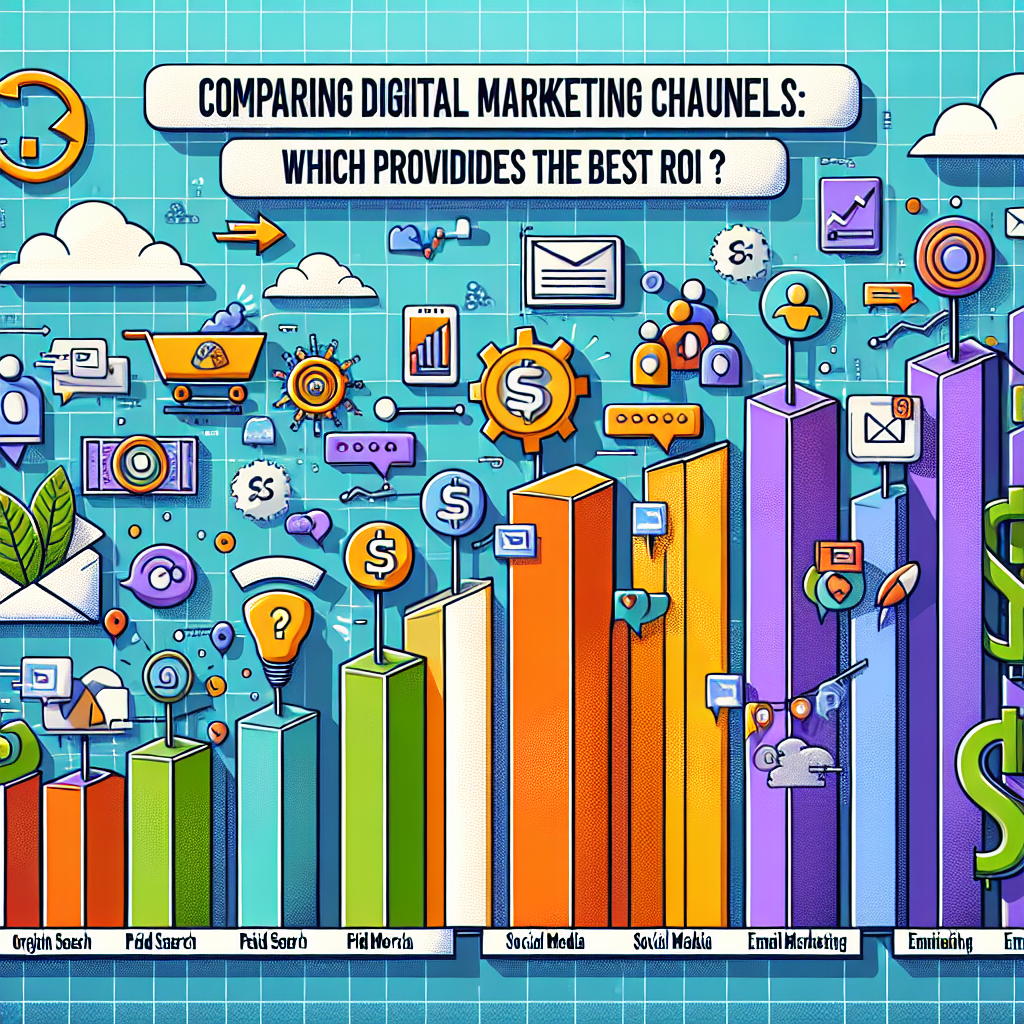In today’s digital landscape, businesses face the challenge of choosing the right marketing channels to invest their hard-earned resources. With the plethora of options available, understanding which digital marketing channel offers the best return on investment (ROI) is crucial. In this article, we will explore various digital marketing channels, compare their effectiveness, and help you determine which might bring the most value to your business.
What is ROI in Digital Marketing?
ROI, or Return on Investment, is a key performance indicator (KPI) that measures the profitability of an investment relative to its cost. In digital marketing, ROI can be calculated by comparing the revenue generated from marketing efforts against the amount spent on those efforts. A positive ROI indicates that a channel is profitable, while a negative ROI suggests it is not performing as expected.
The Digital Marketing Landscape
Before diving into comparisons, let’s take a quick look at the primary digital marketing channels available today:
- Search Engine Optimization (SEO)
- Pay-Per-Click Advertising (PPC)
- Social Media Marketing
- Email Marketing
- Content Marketing
- Affiliate Marketing
Each channel offers unique advantages and challenges, and the effectiveness can vary depending on your specific business goals.
Understanding SEO: Long-Term Gains
How SEO Works
Search Engine Optimization is the art and science of improving a website’s visibility in search engine results. By optimizing content, structure, and technical elements, businesses can attract organic traffic and generate leads without directly paying for clicks or impressions.
ROI Insights
One of SEO’s significant advantages is its long-term ROI. Although it may take time to build momentum, once established, the organic traffic can continue to flow without ongoing costs. Reports show that businesses that invest in SEO see an average ROI of 122% over time.
Challenges of SEO
SEO requires ongoing effort and adaptation to algorithm changes. Additionally, it can be resource-intensive, often needing dedicated personnel and tools. However, the long-term benefits often outweigh the initial costs.
Pay-Per-Click Advertising: Immediate Results
Understanding PPC
Pay-Per-Click Advertising, including platforms like Google Ads, delivers immediate traffic to your website. Advertisers bid on keywords, and their ads may appear at the top of search results or across display networks.
ROI Insights
PPC provides excellent tracking capabilities, allowing businesses to measure performance closely. However, the ROI can be variable; while some industries see high returns, others may struggle with competition and high costs. On average, businesses can expect about a 200% ROI with effective PPC campaigns.
Challenges of PPC
The downside of PPC is its short-term nature. Once the budget runs out, so does the traffic. Businesses must continually invest in ads to maintain visibility, which can lead to fluctuating costs and ROI.
Social Media Marketing: Brand Engagement
The Power of Social Media
Social Media Marketing harnesses platforms like Facebook, Instagram, LinkedIn, and Twitter to engage audiences. It’s a powerful way to build brand awareness and foster customer relationships.
ROI Insights
The ROI from social media can be difficult to measure due to its focus on engagement rather than direct sales. However, brands that actively engage their audience often see higher customer lifetime value (CLV) and loyalty. According to some studies, companies report an average ROI of about 120% from social media efforts when combined with effective targeting and consistent content.
Challenges of Social Media Marketing
The primary challenge is creating content that resonates. The social media landscape is crowded, and businesses must continually innovate to capture attention. Additionally, the success of social media relies heavily on creativity and the ability to adapt to evolving trends.
Email Marketing: Cost-Effective Communication
How Email Marketing Works
Email Marketing involves sending targeted messages to individuals who have opted in to receive communications from your brand. This channel is incredibly effective for nurturing leads and driving sales.
ROI Insights
Email marketing boasts one of the highest ROI rates in the industry, with an average of $42 returned for every dollar spent. This effectiveness stems from its ability to target specific demographics and maintain ongoing relationships with customers.
Challenges of Email Marketing
Despite its cost-effectiveness, email marketing can suffer from low open and click-through rates if not executed properly. Creating valuable, segmented content is key to overcoming these challenges and maximizing ROI.
Content Marketing: Building Authority
Understanding Content Marketing
Content Marketing focuses on creating valuable content to attract and engage a target audience. This can include blogs, videos, infographics, and more.
ROI Insights
While content marketing often has a lower upfront cost than other channels, it requires time and effort to yield results. However, businesses that commit to consistent and quality content typically see a high ROI that can exceed 300% over time.
Challenges of Content Marketing
The key challenge lies in creating high-quality content that resonates with users. Additionally, measuring the direct impact of content on sales can be tricky, necessitating innovative methods to track performance.
Conclusion: Choosing the Best Channel for Your Business
Determining which digital marketing channel offers the best ROI is not a one-size-fits-all answer. Each channel has its strengths and challenges, and the effectiveness often depends on your specific industry, audience, and goals.
For long-term sustainability, SEO and Content Marketing often stand out. If you’re looking for immediate results, PPC may be your best bet, while Email Marketing and Social Media Marketing excel in nurturing leads and engaging customers.
Ultimately, the best approach for your business may involve a combination of several channels. By testing, measuring, and optimizing your strategies, you can create a balanced marketing plan that maximizes ROI across all platforms.
Remember, the key to success in digital marketing lies not just in choosing the right channels but in understanding your audience and providing value through every interaction. Happy marketing!


